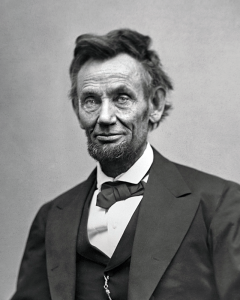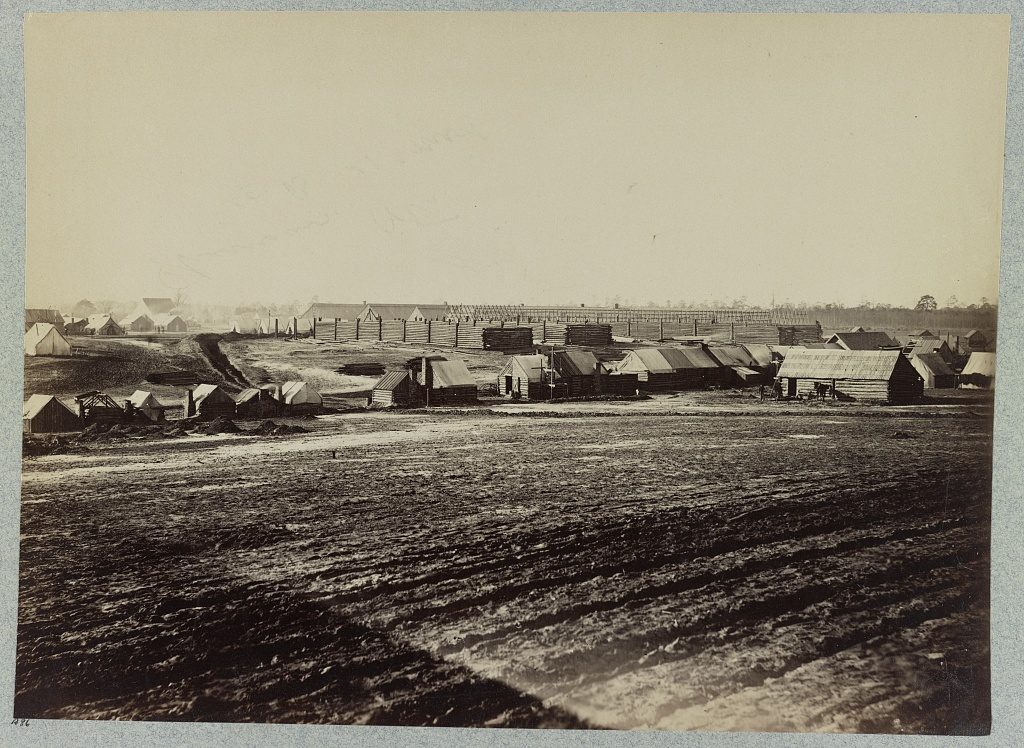ECW Weekender: In Lincoln’s Footsteps at Point of Rocks
 On March 27, 1865, President Lincoln made a trip to Point of Rocks, on the Appomattox River. The day trip, which was just part of his visit to the war lines, may have started out as a compassionate mission to the hospital, but soon became a reflective time for the president.
On March 27, 1865, President Lincoln made a trip to Point of Rocks, on the Appomattox River. The day trip, which was just part of his visit to the war lines, may have started out as a compassionate mission to the hospital, but soon became a reflective time for the president.
Today, a modern park offers hiking and exploring near the location of the hospital; if you’re in need of a little getaway from the cares of life, follow the example of the president and take a walk along the river and natural wetlands.
Lincoln trip to City Point, Point of Rocks, Petersburg, and Richmond occurred during the final days of the Civil War in Virginia – March 23 through April 8, 1865. He met with Generals Grant and Sherman and Admiral Porter aboard the River Queen to discuss plans for the ending the conflict. He visited with Union soldiers, toured hospitals, explored the lines at Petersburg, sat at Jeff Davis’s desk in Richmond, calmed his easily frustrated wife, and kept watch over his son, Tad.

The president’s visit to Point of Rocks occurred the day before his important meeting with Grant, Sherman, and Porter and according to Dr. Moses Greely Parker, Lincoln seemed to have a lot on his mind that day:
“The President looked over the hospital buildings without going into them. He seemed anxious and careworn. He was very kind and genial in his manner, and was carelessly dressed, wearing a tall hat. He said but little, was very thoughtful and evidently wanted to be alone; for he soon left us, walking to the Point of Rocks and sat down under what was called the ‘Pocahontas Oak.’ There he sat looking toward our line of breastworks. Sometimes he placed his elbow on his knee and rested his head wearily on his hand. Obviously he was thinking of something we knew not of. He had, in fact visited General Grant and probably knew what was about to take place.”
Lincoln might have skipped the hospital but the facility had an important history. First established in May 1864 during General Benjamin Butler’s Bermuda Hundred Campaign, the Union hospital first emerged as tents in the orchard of the Strachan House. The medical facility developed as the Overland Campaign morphed into the Siege of Petersburg and casualty numbers grew rapidly.
The Point of Rocks hospital improved from 50 foot long tents to wooden wards. The hospital layout followed typical patterns of the era with grouped wards in a curved shape and patients sorted by disease or wound severity inside. Some of the wards measured 250 feet by 30 feet with 15 foot high ceilings. Estimates and records suggest that this hospital facility could house and care for several thousand sick or wounded during its peak of operation.
Several notable persons in the medical and science fields served at Point of Rocks Hospital, including Clara Barton, Harriet Dame, and Moses Greely Parker. From June through August 1864, Clara Barton worked as superintendent of nursing at the developing facility. In September 1864, Harriet Dame arrived and served as hospital matron; she had volunteered in 1861 to “go to war” with the 2nd New Hampshire Regiment and volunteered in many hospitals. Dr. Parker graduated from Harvard Medical School in 1864 and went to field hospitals; one of his first assignments – building and running Point of Rocks Hospitals. After the war, Parker returned to Massachusetts and pioneered medical procedures, along with experimenting with the telephone which his friend, Alexander G. Bell, invented.

Patients at Point of Rocks Hospital first came from the X Corps, Army of the James. Later, the hospital admitted casualties or ill soldiers from the XVIII Corps and from units of USCT. One particular patient mysteriously gained notoriety (or fame) in the regimental records of the 2nd Pennsylvania Heavy Artillery. On March 6, 1865, that patient was “taken sick on the picket line” and hauled to the hospital; a baby boy soon made an appearance and the secret was out! At least one woman had enlisted in the unit. The regimental historian admitted, “For the next three or four days the event created a great question among the…regiments as to its parental relations.”
Oftentimes, cemeteries were established near hospitals, and Point of Rocks was no exception. At least 2,500 soldiers had been buried in the cemetery there by the end of the war, including about 850 USCT and a few Confederate soldiers. In an interesting twist of history, City Point National Cemetery became the final resting place for the Union dead from Point of Rocks and part of the wall around that cemetery came from stones taken from the point.
Touring:
The actual location of Point of Rocks Hospital appears to be private residences and it is not recommended for visiting without permission. There are historical markers, but the Chesterfield Historical Society and other local history agencies mark the actual location open by guide-led tour only. Happily, the historical society offers tours and contact information for more details: https://www.chesterfieldhistory.com/civil-war-tours
While you may have to join a tour and get permission for the hospital location, you can still tour the Point of Rocks area and take in the scenery for a perfect weekend trip.

At R. Garland Dodd Park at Point of Rocks (located just west of the hospital location), you can explore three miles of hiking trails. Paths will lead you through forest and tidal marshes along the Appomattox River, along with opportunities for birdwatching. Look carefully and you’ll even find the remains of Union earthworks from the Bermuda Hundred Campaign along the park’s roads and trails.
We invite you to getaway for a few hours to a place where – like the Civil War president – you can say “but little” and ponder “very thoughtful” if you want “to be alone” and explore the history of 1864 and 1865.
R. Garland Dodd Park at Point of Rocks – 201 Enon Church Rd Chester, VA 23834
I grew up in this area and knew one of the families that had a house on the hospital site. Thanks for spotlighting this overlooked area of the war history
Point of Rocks is my family’s homestead passed down from generation to generation by wills and
marriage since the 1600s. In 2013 I went to the ceremony when the property was named a
National historic site.